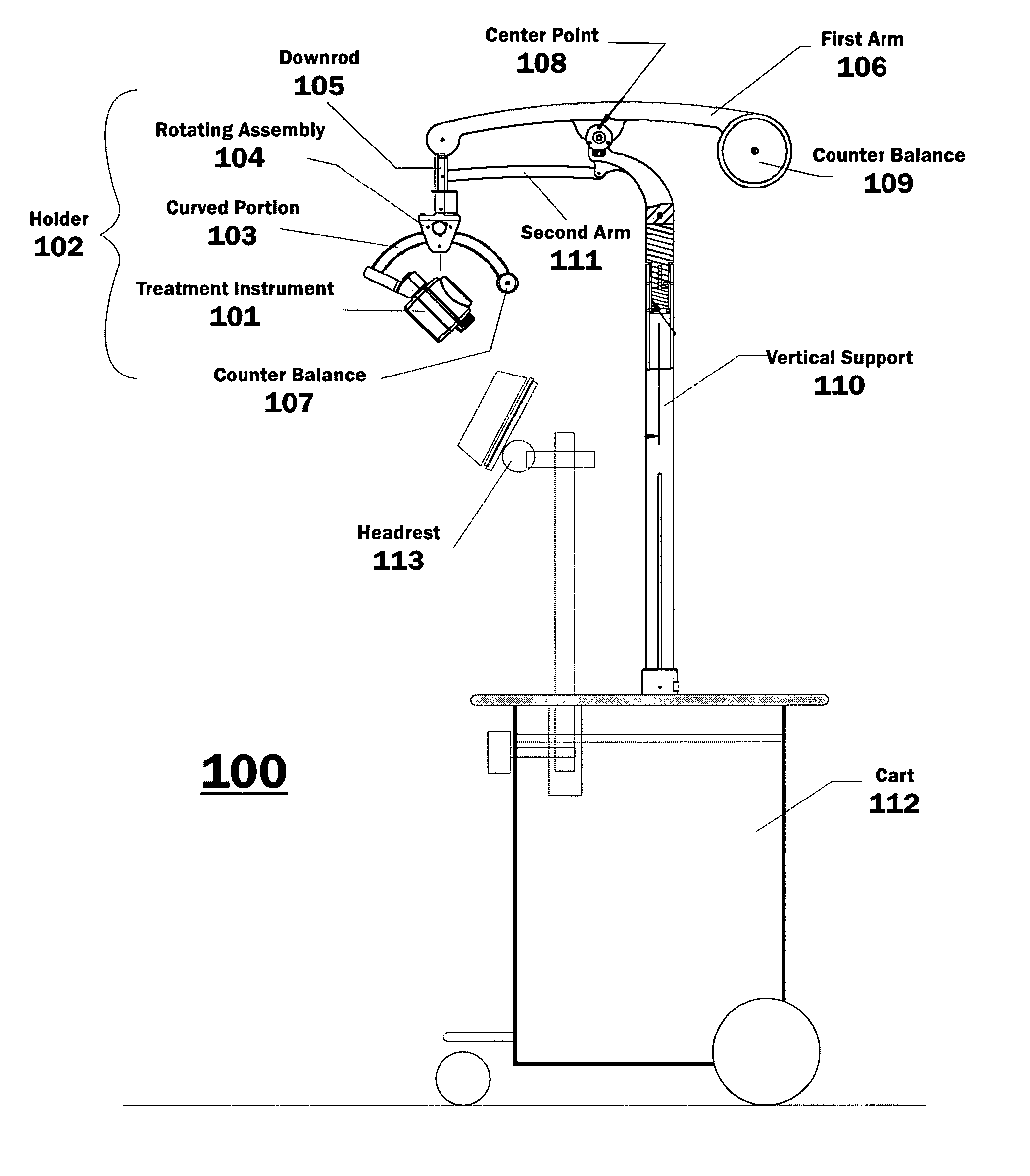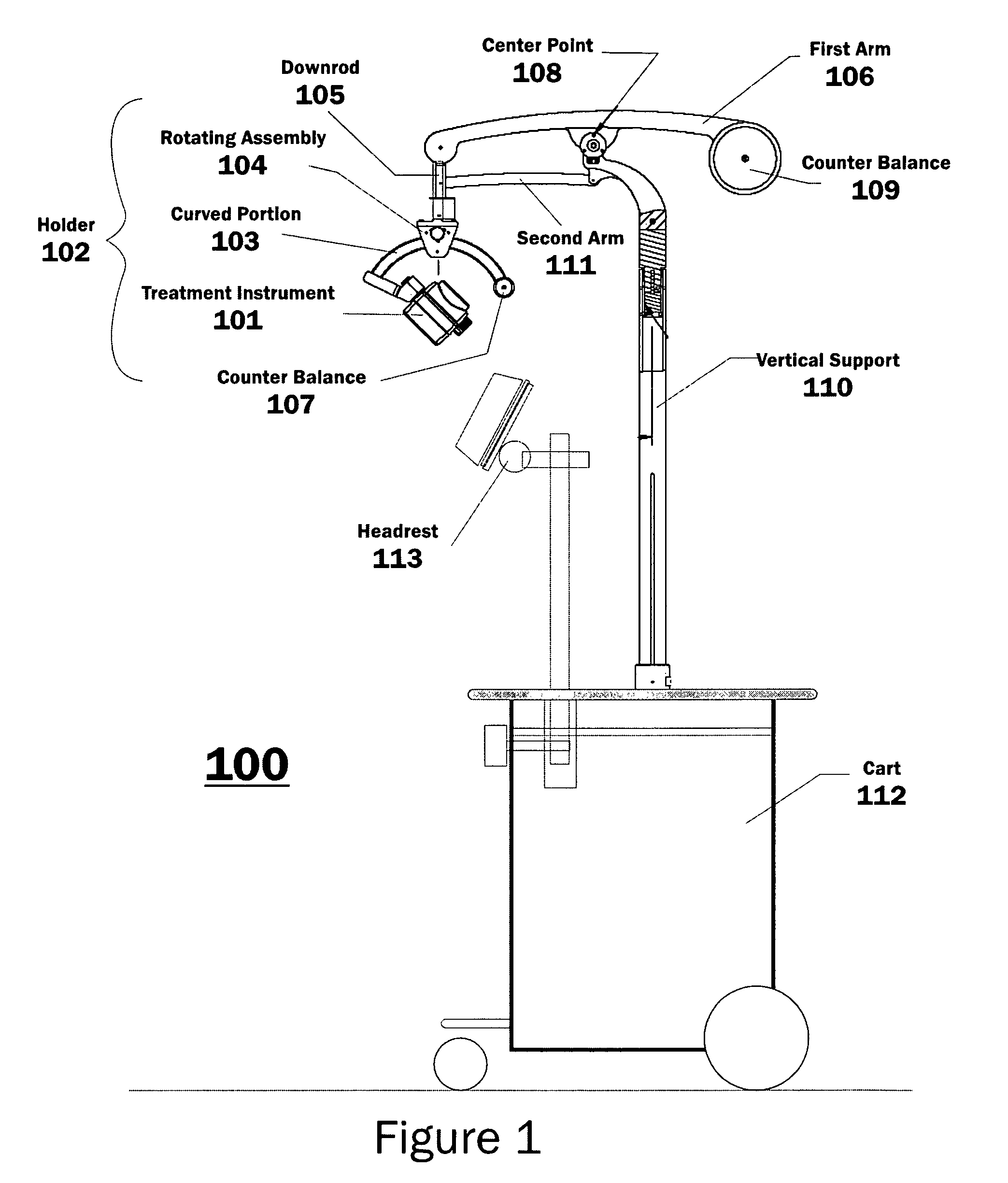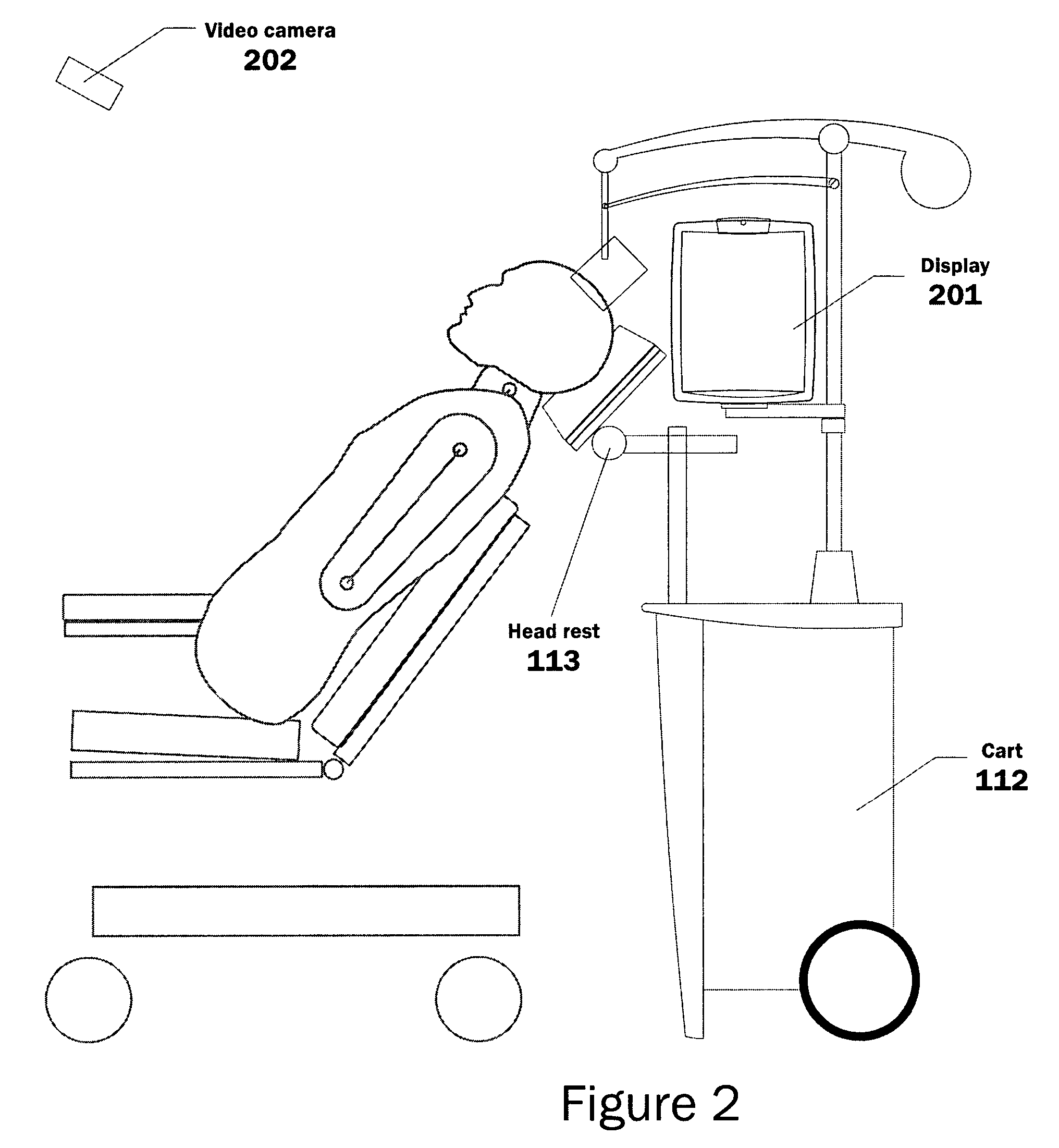Articulating arm
a technology of articulating arms and arm parts, applied in the field of positioning systems, can solve the problems of difficult to repeat and accurately place manual methods, difficult to achieve repeat and accurate placement, and complicated approaches that require expensive and complex imaging or computational systems to determin
- Summary
- Abstract
- Description
- Claims
- Application Information
AI Technical Summary
Benefits of technology
Problems solved by technology
Method used
Image
Examples
Embodiment Construction
[0025]A detailed description of an illustrative embodiment of the present invention will now be described with reference to FIGS. 1-5. Although this description provides a detailed example of a possible implementation of the present invention, it should be noted that these details are intended to be exemplary and in no way delimit the scope of the invention.
[0026]For example, although the invention is discussed in the context of a TMS magnet, it should be appreciated that the treatment instrument may be any treatment instrument. For example, the treatment instrument may be a magnetic stimulation device used for transcutaneous magnetic stimulation treatment of depression. Furthermore, although the device is described with reference the movement of a treatment instrument, it should be appreciated that the device may be used to move and position things other than instruments for the treatment of patients.
[0027]FIG. 1 illustrates a side view of a device 100 for positioning a treatment i...
PUM
 Login to View More
Login to View More Abstract
Description
Claims
Application Information
 Login to View More
Login to View More - R&D
- Intellectual Property
- Life Sciences
- Materials
- Tech Scout
- Unparalleled Data Quality
- Higher Quality Content
- 60% Fewer Hallucinations
Browse by: Latest US Patents, China's latest patents, Technical Efficacy Thesaurus, Application Domain, Technology Topic, Popular Technical Reports.
© 2025 PatSnap. All rights reserved.Legal|Privacy policy|Modern Slavery Act Transparency Statement|Sitemap|About US| Contact US: help@patsnap.com



